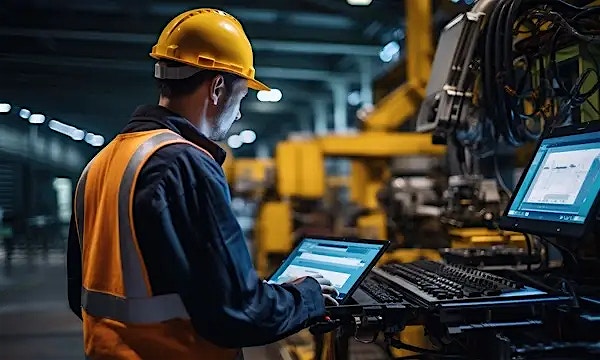The electrification of the automotive industry has been happening for a long time. The first electric car was made in 1832 and the first mass production of electric vehicles, although a failure with many being recalled, took place in 1996 to 1999 by General Motors.
Today, the situation is different, with companies like Tesla transforming the electrification of the automotive industry and challenging the traditional car makers who are now playing catch-up.
In the US, there are approximately two million electric cars on the road and in the UK, there are an estimated 760,000. China is leading the way with 4.5 million electric vehicles, although Europe recently became the largest EV market. These numbers still represent a fraction of the total number of passenger and consumer vehicles on the road, but it’s a clear sign that the electric revolution is here.
“The automotive industry is going into a period of disruption like never before. It’s not only the electrification of the vehicle, but at the same time, vehicle architecture is changing towards being completely software-driven. Marrying these two together is transforming the industry,” says Siba Satapathy - Global Sales Head, Transportation Business at HCLTech.

Industry impact
The traditional market segments that make up the core components of the automotive industry are going through a huge disruption and transformation.
“Traditional OEMs are struggling to maintain a balance between their legacy fleet of products and the transition towards electrification,” continues Satapathy.
At the same time, because the vehicle architecture is changing, software development is on the rise and will become the key differentiator for automotive competitors in the race to electric and autonomous driving.
As an example, a groundbreaking report from Morgan Stanley Research predicted that software and application layers will collectively account for 60% of the value of a self-driving car. This figure remains commonly accepted by the industry.
OEMs are now trying to embrace software development at scale. As a result, automotive suppliers, who traditionally supplied integrated products (software and hardware), are now being asked to just supply the hardware.
“This has created friction as these two segments try to transform and adjust to this new paradigm,” says Satapathy.
He adds: “There are also new players like Tesla who are either vertically integrated or are naturally a software-driven company, who are challenging the traditional automotive industry. In addition, there are new platform entrants emerging that are providing chips, operating systems, data and the technology to support the future of electric and autonomous vehicles like Qualcomm, Waymo, Mobileye etcetera.”
Satapathy also sees consumer technology companies entering the market, bringing their deep expertise in displays, content management and providing the technology for carmakers to improve their passenger experience.
All this disruption has caused several challenges to the industry and traditional OEMs, including bringing maturity into their software development, maintaining their tier one ecosystem and responding to cloud or software-native companies.
At the same time, the industry will have to develop significant infrastructure around charging, battery logistics and transform their manufacturing operations or set up greenfield plants to cater to production of electric vehicles at scale.
The electric opportunity
A significant opportunity in an electric future is the move towards sustainable mobility. With the decline of the internal combustion engine (ICE) in favor of electric, the world will take a massive step in its ability to reduce emissions and effectively tackle climate change.
In congested cities, Satapathy predicts that there will be autonomous pods, which are like electric buses, and an explosion of e-bikes for the last mile of transportation. This multimodal transport system, built on electricity, will help decongest cities and enable faster, cleaner travel.
“Ownerships models are also changing. People won’t necessarily own their own cars, with the rise of shared, lease and fractional mobility. These new business models represent opportunities to optimize the amount of [carbon] footprint that the vehicles have and reduce fleet costs,” says Satapathy.
He adds: “There are new technology providers, traditional players and startup companies coming in and trying to challenge the status quo. This is spurring further innovation, reducing barriers to entry and accelerating the race to an electric future.”
Driving electric change with a transformation partner
HCLTech is in a strong position to support the automotive industry in its transition to electric.
There are multiple reasons for this, according to Satapathy.
“The first is that being the original garage start-up for computers, HCLTech’s DNA lies in embedded systems with extensive software capabilities. There are not many companies that have both digital and engineering capabilities at scale and under the same roof. The automotive market requires both capabilities. Every single client meeting I have today focuses on how their backend infrastructure can hold the enormous amount of data coming from the vehicles, the ability to process that data and bring in AI-based mobility and stakeholder engagement. This requires IT infrastructure capability along with deep experience in core and digital engineering, data and cloud engineering.
“In addition, HCLTech has also supported the aerospace and defense industry in its already established architecture transition towards modular avionics, decoupling software from hardware, which has given us significant experience in the move to the software-defined vehicle and autonomous mobility. We have experience with legacy engineering but are also a very software-driven company.”
He summarizes: “HCLTech comes from a compute background, which means we have an appreciation for embedded systems and chips. There are not many companies that can bring IT and engineering together and work across the automotive value chain, from the chip all the way to the application, and even outside the vehicle in the cloud.”





